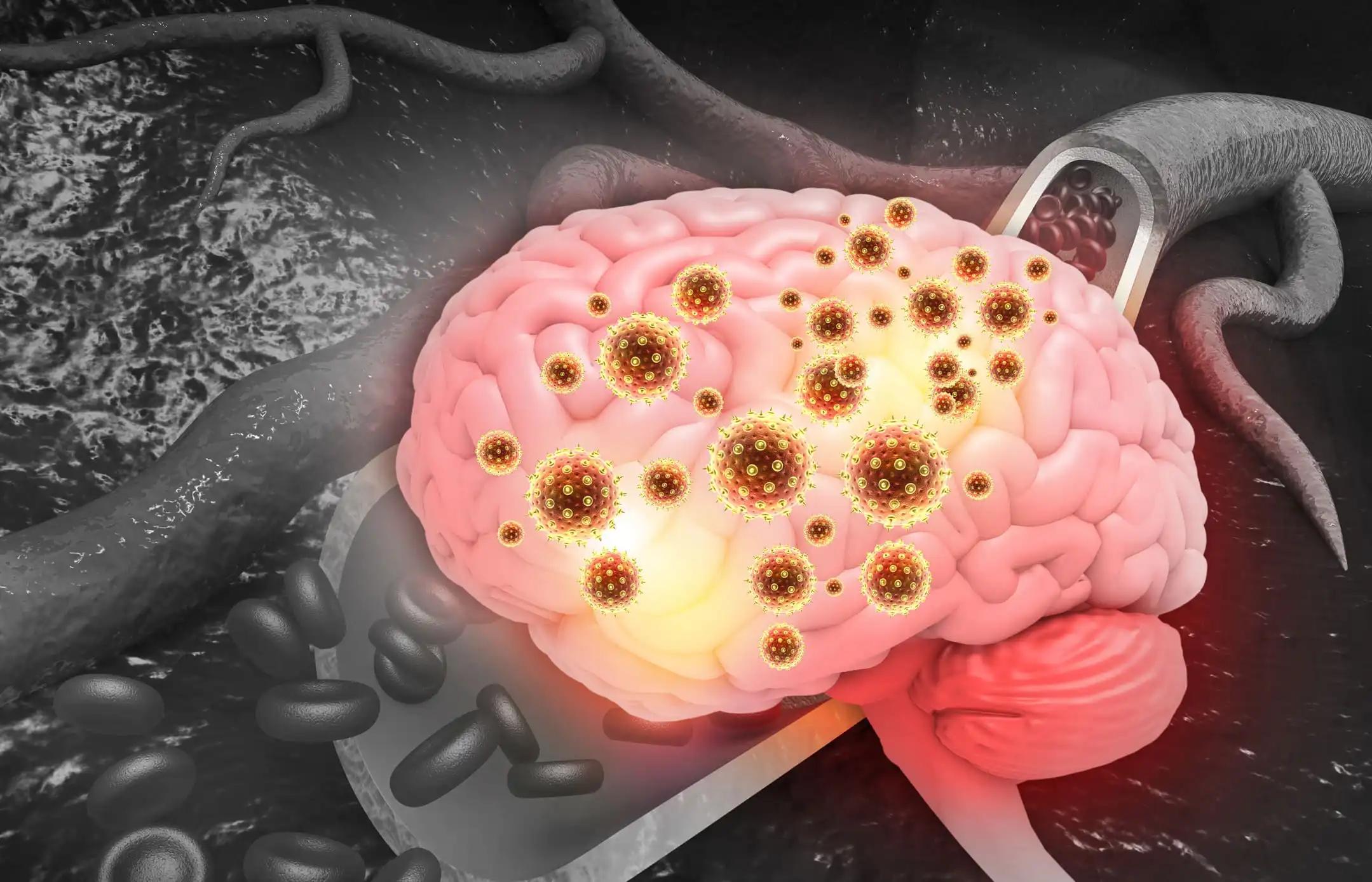KEY TAKEAWAYS
- The study aimed to investigate the involvement of EGFR in the antitumor effects of TAT-Cx43266-283.
- EGFR alterations predicted TAT-Cx43266-283 response, highlighting its potential in targeting GBM recurrence, advancing clinical application.
Glioblastoma (GBM), a form of brain cancer, frequently exhibits alterations in epidermal growth factor receptor (EGFR), ordinarly amplification and EGFRvIII. TAT-Cx43266-283, a Src-inhibitory peptide, demonstrates antitumor effects in preclinical models of GBM.
Andrea Álvarez-Vázquez and the team aimed to investigate how EGFR contributes to the antitumor properties of TAT-Cx43266-283,considering the connection between EGFR and Src.
Researchers investigated the effect of TAT-Cx43266-283, temozolomide (TMZ), and erlotinib (EGFR inhibitor) on patient-derived glioblastoma stem cells (GSCs) and murine neural stem cells (NSCs) with and without EGFR alterations.
They assessed EGFR alterations using Western blot (WB) and Fluorescence In Situ Hybridization (FISH) in these cells and compared with Src activity and survival in glioblastoma samples from The Cancer Genome Atlas (TCGA).
The impact of TAT-Cx43266-283 correlated with EGFR alterations in a collection of patient-derived glioblastoma stem cells (GSCs) and surpassed the effects of TMZ and erlotinib. Specifically, TAT-Cx43266-283 affected only NSCs with EGFR alterations, sparing healthy NSCs. EGFR alterations were associated with increased Src activity and poorer survival outcomes in GBM patients.
Additionally, tumors originating from EGFR-altered NSCs exhibited reduced growth, invasiveness, and vascularization following TAT-Cx43266-283 treatment, ultimately enhancing the survival of immunocompetent mice.
The results demonstrated that clinically significant EGFR alterations serve as predictors of TAT-Cx43266-283 responsiveness and contribute to its mechanism of action, even in TMZ- and erlotinib-resistant GSCs.
TAT-Cx43266-283 effectively targets NSCs harboring GBM-driver mutations, including EGFR alterations, in an immunocompetent GBM model in vivo, indicating a promising potential for combating GBM recurrence. This study marks a significant advancement toward the clinical utilization of TAT-Cx43266-283.
Funding was provided by the Junta de Castilla y León, FEDER (European Regional Development Fund), MCIN/AEI (Ministerio de Ciencia e Innovación/Agencia Estatal de Investigación), European Union NextGenerationEU/PRTR, EMBO (European Molecular Biology Organization), IBSAL (Instituto de Investigación Biomédica de Salamanca), Instituto de Salud Carlos III, Cleveland Clinic Lerner Research Institute, Case Comprehensive Center and Cancer Research UK.
Álvarez-Vázquez A, San-Segundo L, Cerveró-García P, et al. (2024) “EGFR amplification and EGFRvIII predict and participate in TAT-Cx43266-283 antitumor response in preclinical glioblastoma models.” Neuro-Oncology, 2024;, noae060, https://doi.org/10.1093/neuonc/noae060



